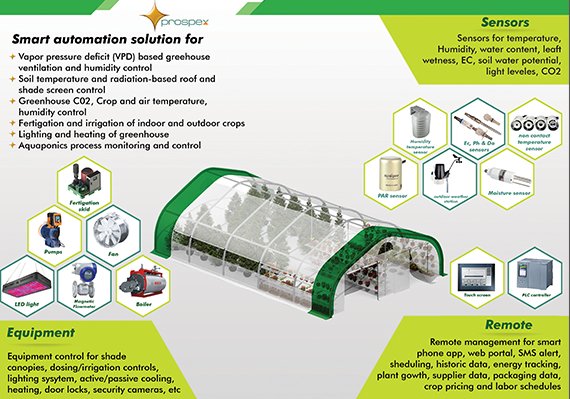Growing Microgreens for Profit: A Comprehensive Guide to a Green Business Venture
Are you looking for a rewarding and potentially lucrative business opportunity that allows you to connect with nature and contribute to a healthier lifestyle? Look no further than growing microgreens for profit. This guide delves deep into the world of microgreens, providing you with the knowledge and insights needed to cultivate a successful and sustainable microgreen business. From understanding what microgreens are and their nutritional benefits to the practical steps of setting up your grow operation, marketing your products, and navigating the financial aspects, we’ll cover everything you need to know to turn your green thumb into a thriving enterprise.
What are Microgreens? Unveiling the Tiny Powerhouses
Microgreens are essentially young vegetable greens harvested just after the first true leaves have developed. They are harvested at a stage when they are packed with nutrients and possess a concentrated flavor profile. Unlike sprouts, which are germinated and consumed with the seed, microgreens are grown in soil or a growing medium, allowing them to absorb nutrients from the soil and develop a more complex flavor.
These tiny plants come in a vast array of varieties, ranging from the familiar (like broccoli, kale, and radish) to the more exotic (such as amaranth, shiso, and mustard). Each variety offers a unique flavor, texture, and nutritional profile, making them a versatile ingredient for chefs, health enthusiasts, and anyone looking to add a burst of freshness and vitality to their diet.
Nutritional Powerhouse: Why Microgreens Are a Superfood
The appeal of microgreens extends far beyond their delightful flavors and textures. They are also nutritional powerhouses, packed with vitamins, minerals, and antioxidants. Studies have shown that microgreens can contain up to 40 times more nutrients than their mature counterparts. This makes them a valuable addition to any diet, offering a concentrated dose of essential vitamins and minerals that can contribute to overall health and well-being.
Here’s a glimpse into the nutritional benefits of microgreens:
- Vitamins: Rich in vitamins A, C, E, and K, essential for immune function, vision, skin health, and blood clotting.
- Minerals: Provide vital minerals like iron, calcium, magnesium, and potassium, crucial for bone health, muscle function, and nerve transmission.
- Antioxidants: Contain high levels of antioxidants, which help protect cells from damage caused by free radicals, potentially reducing the risk of chronic diseases.
- Fiber: Contribute to digestive health and can help regulate blood sugar levels.
The Business of Microgreens: Is It Right for You?
The microgreen industry is experiencing a surge in popularity, driven by the growing demand for healthy and sustainable food options. This presents a significant opportunity for entrepreneurs looking to enter the agricultural sector with a low-cost, high-yield crop. However, like any business venture, success in the microgreen industry requires careful planning, dedication, and a commitment to quality.
Before you jump in, it’s essential to assess your resources, market, and business goals. Here are some key questions to consider:
- What is your initial investment? Microgreen farming typically requires a relatively low initial investment compared to other agricultural ventures. However, you’ll need to factor in the cost of supplies, equipment, and potential marketing expenses.
- Who is your target market? Will you be selling to restaurants, grocery stores, farmers’ markets, or individual consumers? Identifying your target market will help you tailor your product offerings and marketing strategies.
- What is the competition like in your area? Researching your local market will help you understand the existing competition and identify opportunities to differentiate your business.
- What is your production capacity? Determine how much space you have available for growing and how much product you can realistically produce.
- What are your pricing strategies? Research the prices of microgreens in your area to determine a competitive pricing strategy that allows you to make a profit.
Setting Up Your Microgreen Growing Operation: A Step-by-Step Guide
Once you’ve decided that growing microgreens for profit is the right venture for you, it’s time to set up your growing operation. Here’s a detailed guide to help you get started:
1. Choosing Your Growing Space: Indoors vs. Outdoors
The first step is to determine where you will grow your microgreens. You have two primary options: indoors or outdoors. Each has its advantages and disadvantages:
- Indoor Growing: Indoor growing offers more control over the growing environment, allowing you to regulate temperature, humidity, and light. This is particularly advantageous in areas with harsh weather conditions. You can utilize a spare room, basement, or even a dedicated grow tent.
- Outdoor Growing: Outdoor growing is a more cost-effective option, as it eliminates the need for artificial lighting and climate control. However, you’ll need to consider factors like weather, pests, and access to sunlight. You’ll need a sheltered space like a greenhouse or a covered patio to protect your crops.
2. Essential Equipment and Supplies
Regardless of your chosen growing space, you’ll need the following essential equipment and supplies:
- Growing Trays: Choose shallow trays with drainage holes. Standard sizes are 10×20 inches, but you can adjust based on your space.
- Growing Medium: Options include soil, coco coir, peat moss, or a soilless mix. Choose a medium that is well-draining and provides adequate nutrients.
- Seeds: Select high-quality seeds specifically designed for microgreen production. Consider the varieties you want to grow based on market demand and your personal preferences.
- Watering System: A spray bottle or a watering can with a fine rose head is ideal for gentle watering.
- Lighting (for indoor growing): LED grow lights are the most energy-efficient option. Choose lights with a spectrum suitable for plant growth.
- Ventilation (for indoor growing): Ensure adequate ventilation to prevent mold and mildew. A fan can help circulate air.
- Heat Mat (optional): A heat mat can help speed up germination in colder environments.
- Labels and Markers: Essential for tracking your varieties and planting dates.
3. The Planting Process
Here’s a step-by-step guide to planting your microgreens:
- Prepare the Growing Trays: Fill your trays with your chosen growing medium, leaving about an inch of space at the top. Gently level the surface.
- Sow the Seeds: Sprinkle the seeds evenly over the surface of the growing medium. The seeding density will vary depending on the seed type. Refer to seed packets for specific instructions.
- Water Gently: Use a spray bottle or a watering can with a fine rose head to gently water the seeds. Avoid overwatering, which can lead to mold.
- Cover the Seeds (optional): Some growers cover the seeds with a thin layer of growing medium or a humidity dome to promote germination.
- Provide Light and Warmth: Place the trays in a well-lit area or under grow lights. Maintain a consistent temperature, typically between 65-75°F (18-24°C).
- Water Regularly: Water the microgreens regularly, keeping the growing medium moist but not waterlogged.
- Monitor for Pests and Diseases: Inspect your microgreens regularly for signs of pests or diseases. Take appropriate action if necessary.
4. Harvesting Your Microgreens
Harvesting is the culmination of your hard work. Microgreens are typically ready for harvest within 7-21 days, depending on the variety. The ideal time to harvest is when the first true leaves have developed.
Here’s how to harvest your microgreens:
- Timing: Harvest when the microgreens are at the desired stage of growth, usually when the first true leaves have emerged.
- Technique: Use clean, sharp scissors or a knife to cut the microgreens just above the soil line.
- Washing: Rinse the harvested microgreens gently to remove any soil particles.
- Drying: Gently pat the microgreens dry with a clean towel or use a salad spinner.
- Storage: Store the microgreens in a sealed container in the refrigerator. They typically last for 7-10 days.
Marketing and Selling Your Microgreens: Reaching Your Target Audience
Once you have a thriving crop of microgreens, it’s time to focus on marketing and selling your product. Here are some strategies to help you reach your target audience and build a successful business:
1. Identifying Your Target Market
As mentioned earlier, knowing your target market is crucial. Consider the following options:
- Restaurants: Chefs often use microgreens to add flavor, texture, and visual appeal to their dishes.
- Grocery Stores: Partnering with local grocery stores can provide a steady stream of customers.
- Farmers’ Markets: Farmers’ markets offer a direct-to-consumer sales channel and allow you to connect with your customers.
- Individual Consumers: Sell directly to consumers through online platforms, local delivery services, or subscriptions.
2. Branding and Packaging
Create a brand identity that reflects the quality and freshness of your microgreens. This includes:
- Name and Logo: Develop a memorable name and logo for your business.
- Packaging: Choose attractive and functional packaging that protects the microgreens and showcases their freshness. Consider using eco-friendly packaging materials.
- Labels: Include clear labels with the microgreen variety, harvest date, and any relevant information.
3. Pricing Strategies
Determine a pricing strategy that is competitive yet profitable. Consider the following factors:
- Production Costs: Calculate your costs for seeds, growing medium, equipment, and labor.
- Market Research: Research the prices of microgreens in your area.
- Target Market: Adjust your pricing based on your target market. Restaurants may be willing to pay more than individual consumers.
- Profit Margin: Determine your desired profit margin.
4. Sales and Distribution Channels
Explore various sales and distribution channels to reach your target market:
- Direct Sales: Sell directly to customers at farmers’ markets, through online platforms, or via local delivery.
- Wholesale: Partner with restaurants, grocery stores, and other businesses to sell your microgreens wholesale.
- Online Sales: Create an online store or use online platforms to sell your products.
- Subscription Services: Offer subscription services for regular deliveries of microgreens.
5. Marketing and Promotion
Promote your microgreen business to attract customers:
- Website and Social Media: Create a website and social media profiles to showcase your products, share information, and engage with your audience.
- Local Partnerships: Collaborate with local chefs, restaurants, and health food stores.
- Samples and Promotions: Offer samples and run promotions to attract new customers.
- Public Relations: Reach out to local media outlets to generate publicity for your business.
Financial Aspects of Growing Microgreens for Profit
Understanding the financial aspects of your microgreen business is crucial for long-term success. Here are some key considerations:
1. Startup Costs
Estimate your startup costs, including:
- Equipment: Trays, growing medium, lights, watering system, etc.
- Seeds: Initial investment in seeds.
- Packaging: Containers, labels.
- Marketing Materials: Business cards, website, etc.
- Licenses and Permits: Check your local regulations for any necessary licenses or permits.
2. Operating Costs
Calculate your ongoing operating costs, including:
- Seeds: Ongoing seed purchases.
- Growing Medium: Replenishing your growing medium.
- Utilities: Electricity for lights and climate control.
- Water: Water for irrigation.
- Packaging: Ongoing packaging costs.
- Labor: Your time and any hired help.
3. Revenue and Profitability
Project your revenue based on your sales volume and pricing strategy. Calculate your profit by subtracting your total costs from your total revenue.
Profit = Total Revenue – Total Costs
Monitor your financial performance regularly to identify areas for improvement. Consider keeping detailed records of your expenses and revenue to make informed decisions.
4. Pricing Strategies for Profitability
Setting the right price is crucial for profitability. Here’s a more in-depth look at pricing strategies:
- Cost-Plus Pricing: Calculate the total cost of producing your microgreens (including materials, labor, and overhead) and add a desired profit margin. This ensures you cover your costs and make a profit.
- Competitive Pricing: Research the prices of microgreens in your area and set your prices competitively. This can be useful if you are entering a market with established players.
- Value-Based Pricing: Consider the perceived value of your microgreens to your customers. If you are offering high-quality, unique varieties, you may be able to charge a premium price.
- Bundling and Discounts: Offer bundles of different microgreen varieties or discounts for bulk purchases to increase sales volume.
5. Financial Planning and Management
Develop a solid financial plan and track your expenses meticulously. This includes:
- Budgeting: Create a detailed budget outlining your expected income and expenses.
- Record Keeping: Keep accurate records of all your financial transactions.
- Cash Flow Management: Manage your cash flow to ensure you have enough funds to cover your expenses.
- Seeking Professional Advice: Consider consulting with an accountant or financial advisor for guidance.
Common Challenges and How to Overcome Them
While growing microgreens can be a rewarding venture, it’s important to be aware of potential challenges and how to overcome them.
1. Pests and Diseases
Microgreens can be susceptible to pests and diseases. Here’s how to manage them:
- Prevention: Start with clean seeds and a sterile growing environment.
- Monitoring: Regularly inspect your microgreens for signs of pests or diseases.
- Organic Control: Use organic pest control methods, such as insecticidal soap or neem oil, if necessary.
- Good Air Circulation: Ensure adequate ventilation to prevent fungal diseases.
2. Mold and Mildew
Mold and mildew can be a problem in humid environments. Here’s how to prevent and manage them:
- Proper Ventilation: Ensure good air circulation.
- Avoid Overwatering: Water only when necessary and avoid overwatering.
- Use a Well-Draining Growing Medium: Choose a growing medium that allows for good drainage.
- Remove Affected Plants: If mold or mildew appears, remove affected plants immediately.
3. Market Competition
Competition can be fierce. Here’s how to stand out:
- Differentiate Your Product: Offer unique varieties, high-quality products, and excellent customer service.
- Build a Strong Brand: Develop a strong brand identity and market your business effectively.
- Focus on Quality: Prioritize quality to maintain customer loyalty.
- Adapt and Innovate: Continuously adapt to market trends and innovate with new varieties or product offerings.
4. Scaling Up Production
As your business grows, you may need to scale up your production. Here’s how to approach scaling:
- Plan Ahead: Plan your expansion carefully, considering your resources and market demand.
- Invest in Equipment: Invest in more efficient equipment as needed.
- Manage Your Workforce: Hire and train employees as your business grows.
- Maintain Quality: Ensure you maintain the quality of your products as you scale up.
Tips for Success: Setting Yourself Apart in the Microgreen Market
To truly thrive in the microgreen market, consider these additional tips:
- Focus on Quality: Prioritize the quality of your microgreens. Use high-quality seeds, a clean growing environment, and proper watering and lighting techniques.
- Offer Variety: Offer a diverse selection of microgreen varieties to appeal to a wider range of customers.
- Provide Excellent Customer Service: Build relationships with your customers. Be responsive to their needs and provide excellent customer service.
- Stay Informed: Stay updated on the latest trends and developments in the microgreen industry.
- Network and Collaborate: Network with other growers, chefs, and businesses in your area. Collaborate on projects and share knowledge.
- Embrace Sustainability: Promote sustainable growing practices to appeal to environmentally conscious consumers.
- Track Your Results: Monitor your sales, expenses, and customer feedback to assess your performance and make improvements.
Conclusion: Cultivating a Bright Future with Microgreens
Growing microgreens for profit offers a unique opportunity to combine your passion for healthy food with a viable business venture. By understanding the fundamentals of microgreen cultivation, marketing, and financial management, you can cultivate a thriving and sustainable business. Embrace the challenges, learn from your experiences, and never stop striving for excellence. With dedication, perseverance, and a touch of green thumb magic, you can transform your microgreen dreams into a profitable reality. The world of microgreens is waiting – are you ready to grow?


